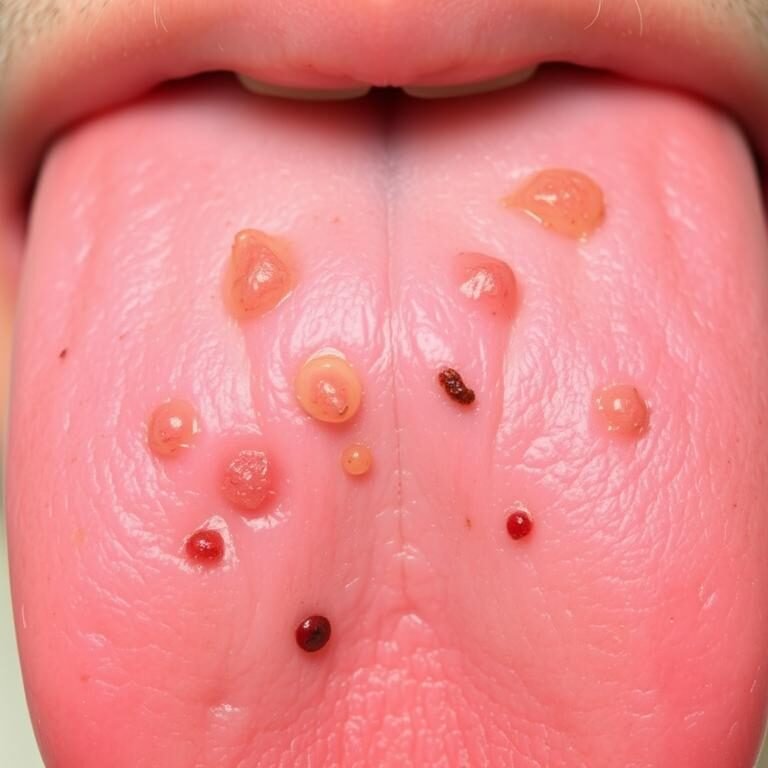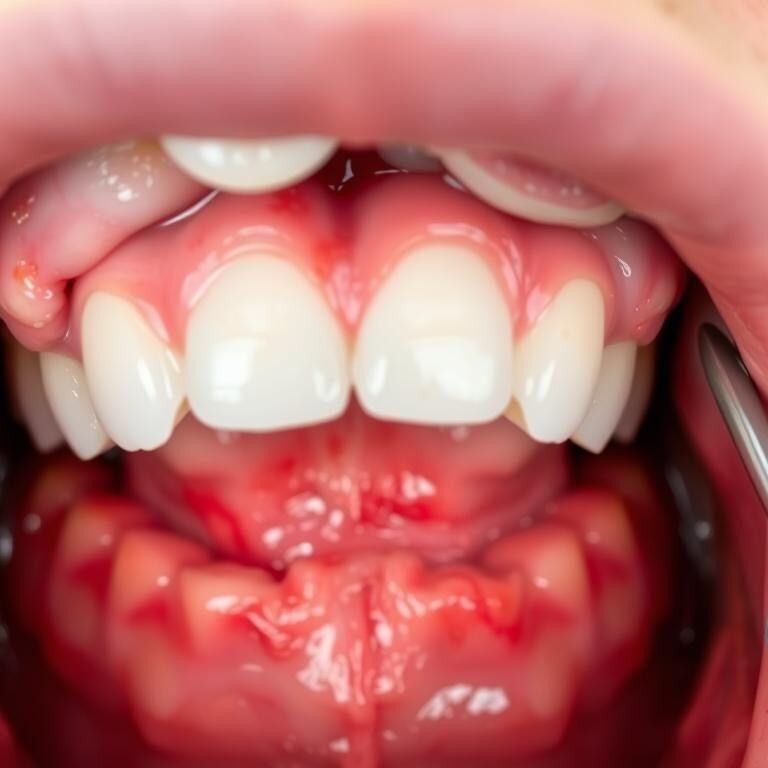Table of Contents
Dental Plaque: The Sticky Culprit Behind Tooth Decay
Dental plaque is a sticky film that forms on the teeth and is a major contributor to tooth decay. Composed of bacteria, food particles, and saliva, dental plaque adheres to the tooth surfaces and can be challenging to remove without proper oral hygiene practices. The bacteria within dental plaque feed on sugars in the food we eat, producing acids that erode the tooth enamel over time. This erosion leads to the formation of cavities, which can result in pain, sensitivity, and even tooth loss if left untreated.
Preventing and managing dental plaque is crucial for maintaining optimal oral health. Regular brushing and flossing are essential in removing plaque from the teeth and gums, as they disrupt the plaque’s growth and limit the production of harmful acids. Additionally, visiting a dentist regularly for professional cleanings and check-ups can help identify and address any plaque or decay that may have developed.

Certain individuals may be more prone to dental plaque formation than others. Factors such as poor oral hygiene, excessive sugar consumption, dry mouth, and certain genetic predispositions can increase one’s susceptibility to plaque buildup. Therefore, understanding the role of dental plaque in tooth decay and adopting preventive measures is vital in preserving a healthy smile.
Sugar and its Role in Dental Decay
Sugar is a common ingredient in many of the foods and beverages we consume on a daily basis. While it may satisfy our sweet tooth, it also plays a significant role in dental decay. When we consume sugary substances, certain bacteria in our mouths feed on the sugar and produce acids as a byproduct. These acids attack the enamel, the protective outer layer of our teeth, causing it to weaken and eventually leading to tooth decay.
The frequency and amount of sugar consumption can greatly impact dental health. Snacking on sugary treats throughout the day, for example, exposes our teeth to prolonged acid attacks. This, combined with poor oral hygiene habits, can create the perfect environment for cavities to develop. It is crucial to be mindful of our sugar intake and adopt a balanced diet that includes foods rich in essential nutrients for dental health. Additionally, practicing good oral hygiene, such as regular brushing and flossing, can help mitigate the harmful effects of sugar on our teeth.
Acidic Foods and Drinks: Hidden Dangers for Dental Health
Maintaining good dental health involves more than just brushing and flossing. The foods and drinks we consume on a daily basis can have a significant impact on the health of our teeth. Acidic foods and drinks, in particular, pose hidden dangers that can lead to dental decay if not properly managed.
Acidic foods and drinks, such as citrus fruits, sodas, and sports drinks, have a low pH level, which means they are highly acidic. When consumed, these acidic substances can erode the enamel on our teeth, making them more vulnerable to tooth decay. Enamel is the protective outer layer of our teeth, and once it is worn down, bacteria can penetrate the tooth and cause cavities. Therefore, it is essential to limit the consumption of acidic foods and drinks and to take appropriate measures to protect our teeth from their harmful effects.
| Acidic Foods and Drinks | pH Level | Potential Dental Health Risks |
|---|---|---|
| Citrus fruits (e.g., oranges, lemons) | 2.0 – 3.0 | Enamel erosion, tooth decay |
| Carbonated soft drinks (e.g., sodas) | 2.5 – 3.5 | Enamel erosion, tooth decay, dental erosion |
| Pickles | 3.2 – 3.7 | Enamel erosion, tooth sensitivity |
| Wine (white and red) | 2.5 – 4.5 | Enamel erosion, staining, tooth decay |
| Fruit juices (e.g., apple, cranberry) | 3.0 – 4.0 | Enamel erosion, tooth decay, dental erosion |
| Tomato-based products (e.g., ketchup, tomato sauce) | 3.5 – 4.7 | Enamel erosion, staining |
One way to mitigate the impact of acidic foods and drinks is to consume them in moderation and in conjunction with other foods. This helps to neutralize the acid and minimize its effect on the teeth. Additionally, rinsing the mouth with water or using a fluoride mouth rinse after consuming acidic substances can help wash away the acid and restore a more neutral pH level in the mouth. However, it is important to note that these measures should not replace regular oral hygiene practices but should complement them for optimal dental health.
Poor Oral Hygiene: Ignoring the Basics Leads to Cavities
Ignoring the basics of oral hygiene can have serious consequences for your dental health, leading to the development of cavities. Cavities, also known as dental caries, are permanently damaged areas on the surface of your teeth that can progressively worsen over time if left untreated. When we neglect proper oral hygiene practices, such as brushing and flossing daily, plaque accumulates on our teeth. This sticky film is composed of bacteria, food particles, and saliva, and it releases acids that attack tooth enamel, the protective outer layer of our teeth.
Regular brushing and flossing are crucial in removing plaque and preventing the buildup of harmful bacteria in our mouths. Neglecting these basic practices allows plaque to remain on our teeth, providing an ideal environment for bacteria to thrive and produce even more harmful acids. Over time, these acids erode tooth enamel, creating small holes in the surface of the teeth, which are the early stages of cavities.

In addition to brushing and flossing, maintaining a healthy diet is also essential for preventing cavities. By limiting the consumption of sugary and acidic foods and drinks, we can minimize the amount of plaque buildup and acid production in our mouths. Proper oral hygiene practices combined with a balanced diet can go a long way in preventing cavities and maintaining good dental health.
Stay tuned for more in-depth information on the impact of poor oral hygiene on cavity formation and preventive measures to keep your teeth healthy.
Bacteria and Tooth Decay: The Harmful Relationship
Tooth decay, also known as dental caries, is a widespread oral health issue affecting millions of people worldwide. While the primary cause of tooth decay is poor oral hygiene practices, another significant factor that contributes to this problem is the harmful relationship between bacteria and tooth decay.
Our mouths are teeming with bacteria, some of which are beneficial for our oral health, while others can be detrimental. When we consume foods and beverages high in sugars and starches, these bacteria feed on the leftover particles, producing acids as a byproduct. It is these acids that gradually erode the protective layer of our teeth, known as enamel.
The harmful relationship between bacteria and tooth decay can quickly escalate if preventive measures are not taken. When the enamel becomes weakened or damaged, it creates an ideal environment for bacteria to thrive and multiply. As the bacteria continue to produce acids, they can penetrate deeper into the tooth, ultimately causing cavities. Furthermore, certain strains of bacteria, such as Streptococcus mutans, are particularly adept at sticking to the tooth surfaces and forming dental plaque, which further accelerates the progression of tooth decay.
| Bacteria |
| – Bacteria present in the mouth, particularly Streptococcus mutans and Lactobacillus, play a significant role in tooth decay. |
| – These bacteria feed on sugars and produce acids that attack tooth enamel, leading to decay. |
| – They form plaque, a sticky biofilm on teeth, providing a conducive environment for decay. |
| Tooth Decay |
| – Tooth decay, also known as dental caries, is the destruction of tooth structure caused by acid-producing bacteria. |
| – It starts with demineralization of enamel, leading to cavities or holes in the teeth. |
| – If left untreated, decay can progress to affect deeper layers of the tooth, causing pain, infection, and potential tooth loss. |
| Harmful Relationship |
| – Bacteria thrive on sugars from food and beverages, producing acids that erode tooth enamel. |
| – As decay progresses, bacteria continue to proliferate in the damaged areas, exacerbating the problem. |
| – Without proper oral hygiene and preventive measures, this cycle of bacterial activity and decay can lead to significant dental problems. |
Understanding the harmful relationship between bacteria and tooth decay highlights the importance of maintaining good oral hygiene practices and making wise dietary choices. By brushing and flossing regularly, using antimicrobial mouthwashes, and visiting the dentist for professional cleanings and check-ups, we can prevent the proliferation of harmful bacteria and the subsequent development of tooth decay. Additionally, reducing our intake of sugary and starchy foods can help minimize the production of acid by bacteria, ultimately safeguarding our dental health.
Dry Mouth: A Common Condition that Promotes Cavities
Dry mouth, also known as xerostomia, is a common condition that can have a significant impact on dental health. Saliva plays a crucial role in oral health by helping to wash away food particles, neutralize acids, and prevent the buildup of harmful bacteria. When saliva production is reduced, as is the case with dry mouth, these protective functions are compromised, making the individual more susceptible to cavities.
One of the primary causes of dry mouth is medication. Numerous medications, including those for allergies, high blood pressure, and depression, can contribute to a decrease in saliva production. Other factors, such as certain medical conditions, radiation therapy, and dehydration, can also lead to dry mouth. Without adequate saliva, the mouth becomes an environment that is more conducive to bacterial growth and acidity, which can ultimately lead to the development of cavities. It is important for individuals experiencing dry mouth to consult with their dentist or healthcare provider to determine the underlying cause and explore appropriate treatment options to prevent cavities and maintain optimal oral health.
Genetics and Tooth Decay: Are Cavities Inherited?
The role of genetics in tooth decay has long been a topic of interest and study in the field of dentistry. While dental health is heavily influenced by factors such as oral hygiene practices and dietary habits, research suggests that genetics may also play a significant role in the development of cavities.
Several genes responsible for tooth enamel formation, saliva production, and immune response have been identified as potential contributors to susceptibility to tooth decay. For example, variations in the gene that regulates the formation of enamel can result in enamel defects, making teeth more prone to cavities. Additionally, genetic factors can influence saliva composition and flow rate, which play a crucial role in buffering acids and protecting teeth against decay.
A study published in the Journal of Dental Research found that the risk of cavities in children varied depending on their genetic makeup and the presence of certain genes related to dental health. This study emphasized the importance of considering genetic factors when evaluating the dental health of individuals, particularly when designing preventive and treatment strategies.

Understanding the genetic factors associated with tooth decay is not only valuable for identifying those at higher risk but also for developing personalized prevention and treatment approaches. By identifying individuals who may be more genetically predisposed to cavities, dentists can tailor their recommendations for oral care, including specific dental hygiene practices and dietary modifications.
Further research is needed to fully comprehend the complex genetic factors involved in tooth decay. It is important to note that genetics alone cannot solely determine an individual’s susceptibility to cavities. Other external factors such as diet, oral hygiene, and lifestyle choices also contribute significantly to dental health.
In conclusion, while genetics may influence an individual’s predisposition to tooth decay, it is just one piece of the puzzle. Maintaining good oral hygiene practices, following a balanced diet, and scheduling regular dental check-ups are vital for everyone, regardless of their genetic makeup. By taking a comprehensive approach to dental care, we can minimize the risk of cavities and promote optimal oral health for all.
Tooth Anatomy: Understanding Vulnerable Areas for Decay
Tooth anatomy is a fascinating subject that plays a crucial role in understanding the vulnerable areas for tooth decay. Our teeth are made up of different layers, each with its own unique composition and susceptibility to decay. The outermost layer, known as the enamel, is the hardest substance in our bodies and provides a protective barrier against bacteria and acids. However, it is important to note that even though enamel is highly resistant, it is still susceptible to erosion when exposed to acidic foods and drinks, leading to the formation of cavities.
Another vulnerable area is the dentin, which lies beneath the enamel. Dentin is not as hard as enamel and contains tiny tubules that connect to the innermost part of our teeth called the pulp. When tooth decay reaches the dentin, it can progress more rapidly and cause sensitivity or pain. Additionally, the shape and position of our teeth can also contribute to the vulnerability of certain areas. For example, the grooves and pits on the chewing surfaces of molars and premolars can easily trap food particles and plaque, making these areas more prone to decay.
Understanding the different layers of tooth anatomy and their vulnerability to decay is essential for maintaining good oral health. By being aware of these vulnerable areas, we can take proactive steps to prevent cavities and protect our teeth. Regular dental check-ups, brushing and flossing techniques, and a balanced diet low in sugary foods and acidic drinks all play a significant role in minimizing the risk of tooth decay. By prioritizing oral hygiene practices and seeking professional dental care, we can help ensure that our teeth remain healthy and strong throughout our lives.
Medical Conditions and Medications: Factors Affecting Dental Health
Medical conditions and certain medications can have a significant impact on dental health. It is important to be aware of these factors, as they can contribute to the development of various oral health issues. Some medical conditions, such as diabetes and autoimmune disorders, can weaken the immune system and make individuals more susceptible to infections and gum disease. Additionally, certain medications, such as antihistamines or antidepressants, can cause dry mouth, which reduces saliva production and increases the risk of tooth decay. It is crucial for individuals with these conditions or taking these medications to take extra care of their dental health and maintain regular dental check-ups to prevent any potential complications.
Furthermore, it is important to note that certain medical treatments, such as chemotherapy or radiation therapy, can also affect dental health. These treatments can cause oral complications, such as mouth sores, infections, and gum inflammation. It is essential for individuals undergoing these treatments to communicate with their dentist about their medical condition and treatment plan, as the dentist can provide specific advice and preventive measures to minimize any potential damage to dental health. By being proactive and seeking professional guidance, individuals with medical conditions or using certain medications can effectively manage potential oral health issues and maintain a healthy smile.
Age and Tooth Decay: How Dental Needs Change Throughout Life
As we age, our dental needs undergo various changes, making it essential to adapt our oral care routine accordingly. One of the key changes that occur with age is the increased risk of tooth decay. This is due to factors such as receding gums, reduced saliva flow, and the natural aging of our teeth, which can lead to more vulnerable areas for decay to form.
As we get older, it becomes crucial to maintain regular dental check-ups and cleanings to detect and address any signs of tooth decay as early as possible. Additionally, practicing good oral hygiene habits, such as brushing twice a day with a fluoridated toothpaste and flossing daily, can go a long way in preventing tooth decay. It is also important to be mindful of our diet and nutrition, as certain age-related dietary changes can impact dental health. By staying vigilant and proactive in our oral care routine, we can effectively address the changing dental needs that come with age.
Dental Fillings: Their Role in Preventing and Treating Cavities
Dental fillings play a crucial role in the prevention and treatment of cavities. When tooth decay occurs, it creates small holes or cavities in the teeth. These cavities need to be filled to restore the tooth’s function and prevent further decay.
The primary purpose of dental fillings is to seal the cavity and prevent bacteria from entering and causing more damage. The filling material, commonly composite resin or amalgam, is carefully placed and shaped to match the natural contour of the tooth. Once in place, it not only strengthens the tooth but also helps prevent the spread of decay.
By getting regular dental check-ups and maintaining good oral hygiene practices, you can prevent cavities from forming. However, when a cavity does occur, dental fillings are a reliable and effective treatment option. It’s important to consult with a dentist to determine the most suitable filling material for your specific needs and dental health.
Fluoride: A Powerful Ally in the Fight Against Tooth Decay
Fluoride is widely recognized as a powerful ally in the fight against tooth decay. This naturally occurring mineral has proven benefits in preventing cavities and promoting overall dental health. When used in the right amount and at the appropriate levels, fluoride can significantly reduce the risk of tooth decay, particularly in children and adolescents. Numerous studies have demonstrated the positive impact of fluoride in strengthening tooth enamel and making it more resistant to acid attacks from plaque bacteria and sugary foods. In fact, the Centers for Disease Control and Prevention (CDC) considers community water fluoridation as one of the top 10 public health achievements of the 20th century.
Fluoride works by remineralizing tooth enamel, effectively reversing early stages of tooth decay and preventing further damage. As fluoride is absorbed into the tooth structure, it helps to replace lost minerals and create a stronger, more resilient surface. In addition to its protective effects, fluoride can also inhibit the growth and activity of harmful oral bacteria, reducing the likelihood of developing cavities. The American Dental Association (ADA) recommends the use of fluoride toothpaste and mouth rinses, as well as professional fluoride treatments, to enhance oral health and prevent tooth decay. However, it is important to note that while fluoride offers significant benefits, excessive intake can lead to dental fluorosis, a cosmetic condition characterized by white spots on the teeth. Therefore, it is crucial to strike a balance and consult with dental professionals for appropriate fluoride recommendations.
The Role of Dental Sealants in Preventing Cavities
When it comes to preventing cavities, dental sealants play a crucial role in maintaining oral health, especially in children. Dental sealants are a thin layer of protective coating that is applied to the chewing surfaces of the back teeth (molars and premolars). These teeth are particularly vulnerable to cavities due to their rough texture and deep grooves, which can easily trap food particles and bacteria. The sealant acts as a barrier, preventing plaque and acid from damaging the enamel and forming cavities.
One of the main advantages of dental sealants is their ability to provide long-lasting protection against tooth decay. According to the American Dental Association (ADA), sealants can effectively reduce the risk of cavities by up to 80% in the first year and continue to provide protection for up to 10 years. This makes them an excellent preventive measure, especially for children who may have difficulty maintaining proper oral hygiene or who are at a higher risk of developing cavities. Additionally, sealants are a non-invasive and painless procedure, making them a popular choice for both parents and children.
| Aspect | Role of Dental Sealants |
|---|---|
| Definition | Thin, protective coatings applied to the chewing surfaces of molars and premolars to prevent cavities by sealing off the deep grooves where bacteria and food particles can accumulate. |
| Mechanism of Action | Sealants act as a barrier, preventing plaque and bacteria from accumulating in the pits and fissures of teeth, thus reducing the risk of tooth decay. |
| Effectiveness | Highly effective in preventing cavities when properly applied and maintained, with studies showing significant reductions in cavities among children and adolescents who receive sealants. |
| Target Population | Primarily recommended for children and teenagers, as their newly erupted permanent teeth are most vulnerable to cavities. However, adults at high risk for cavities can also benefit from sealant application. |
| Application Process | Involves cleaning the tooth surface, etching it with a special gel to create a rough surface for better adhesion, applying the sealant material, and curing it with a special light to harden it. |
| Longevity | Sealants can last for several years with proper care, but may need to be reapplied or touched up periodically to maintain effectiveness. Regular dental check-ups are essential to monitor the condition of sealants. |
| Cost | Generally considered cost-effective compared to the treatment of cavities, especially when applied to high-risk populations such as children with no dental insurance coverage. |
| Limitations | Sealants only protect the chewing surfaces of teeth and do not prevent cavities between teeth or in areas not covered by the sealant. Additionally, sealants can wear down over time, requiring maintenance or replacement. |
| Importance of Oral Hygiene | While sealants are beneficial, they should not replace good oral hygiene practices such as regular brushing, flossing, and dental check-ups. Combining sealants with proper oral care maximizes cavity prevention efforts. |
In conclusion, dental sealants play a vital role in preventing cavities, particularly in children. By creating a protective barrier on the chewing surfaces of the back teeth, sealants help reduce the risk of tooth decay and promote long-term oral health. As a preventive measure, sealants can significantly reduce the need for more invasive and costly dental procedures in the future. If you’re considering dental sealants for your child, consult with a dentist who can provide expert guidance and ensure their effectiveness in your child’s dental care routine.
Diet and Nutrition: Building Blocks for Dental Health
Good dental health begins with a nutritious diet and proper nutrition. The foods we consume play a significant role in maintaining the health of our teeth and gums. A balanced diet that includes essential nutrients helps strengthen our teeth, prevents tooth decay, and promotes overall oral health.
One important nutrient for dental health is calcium. Calcium is essential for the development of strong teeth and bones. It helps to form the enamel, the protective outer layer of the tooth, and keeps it strong and resistant to decay. Good sources of calcium include dairy products like milk, cheese, and yogurt, as well as leafy green vegetables and almonds.
Another important nutrient is vitamin D. Vitamin D aids in the absorption of calcium and helps maintain the balance of minerals in our teeth. It is necessary for the proper formation of enamel and dentin, the layer beneath the enamel. Sunlight is the primary source of vitamin D, but it can also be found in fatty fish, egg yolks, and fortified foods.
In addition to calcium and vitamin D, other nutrients like phosphorus, vitamin C, and vitamin A are also important for dental health. Phosphorus works with calcium to strengthen teeth, while vitamin C helps maintain healthy gums and promotes healing. Vitamin A is crucial for the development of tooth enamel and supports the production of saliva, which helps to wash away bacteria and prevent tooth decay.
A diet rich in fruits, vegetables, lean proteins, whole grains, and low-fat dairy products provides the necessary vitamins and minerals for optimal dental health. Limiting the consumption of sugary and acidic foods and drinks is also essential to prevent tooth decay. By maintaining a balanced diet and paying attention to nutrition, we can build strong foundations for lifelong dental health.
Oral Health Habits: Establishing Routines for Cavity Prevention
Establishing good oral health habits is crucial for cavity prevention and maintaining overall dental health. By following a consistent routine, individuals can significantly reduce their risk of developing tooth decay and other oral health issues. Here are some essential habits to incorporate into your daily dental care:
1. Brushing: Brush your teeth at least twice a day using a fluoride toothpaste and a soft-bristled toothbrush. Be sure to brush all surfaces of your teeth, including the gum line, and spend at least two minutes on each brushing session. Using gentle, circular motions will effectively remove plaque and bacteria.
2. Flossing: Regular flossing is an integral part of oral hygiene. It helps remove food particles and plaque from between the teeth and along the gum line, where a toothbrush cannot reach. Make sure to floss at least once a day, gently sliding the floss up and down each side of each tooth.
By incorporating these practices into your daily routine, you can effectively reduce plaque buildup, prevent cavities, and maintain optimal oral health. Additionally, it is important to visit your dentist regularly for professional cleanings and examinations. Remember, prevention is always better than treatment when it comes to dental health.
How can dental plaque lead to tooth decay?
Dental plaque is a sticky film that forms on teeth and contains harmful bacteria. If not removed through proper oral hygiene, the bacteria in plaque produce acids that can erode tooth enamel and lead to tooth decay.
How does sugar contribute to dental decay?
Sugar acts as a food source for the bacteria in dental plaque. When bacteria consume sugar, they produce acids that attack tooth enamel, leading to tooth decay over time.
Are acidic foods and drinks harmful to dental health?
Yes, acidic foods and drinks can be damaging to dental health. The acids in these substances can erode tooth enamel, making the teeth more susceptible to decay.
What happens if oral hygiene is neglected?
Neglecting basic oral hygiene practices, like brushing and flossing, can allow plaque to build up on the teeth. This can lead to the development of cavities and other dental problems.
How does bacteria contribute to tooth decay?
Bacteria in dental plaque produce acids that attack tooth enamel, causing decay. Additionally, certain strains of bacteria can directly damage tooth structure and contribute to the formation of cavities.
What is dry mouth and how does it promote cavities?
Dry mouth is a condition where the mouth does not produce enough saliva. Saliva helps neutralize acids and wash away food particles, so a lack of saliva can increase the risk of cavities by allowing acids and bacteria to accumulate on the teeth.
Can tooth decay be inherited through genetics?
While genetics can play a role in the susceptibility to tooth decay, cavities themselves are not directly inherited. Factors such as tooth structure and the composition of saliva can be influenced by genetics, which can impact the likelihood of developing cavities.
Which areas of the teeth are most vulnerable to decay?
The grooves and crevices on the biting surfaces of the molars and premolars are particularly vulnerable to decay. These areas can be difficult to clean thoroughly, making them more prone to plaque accumulation and cavities.
How do medical conditions and medications affect dental health?
Certain medical conditions and medications can affect oral health. For example, conditions that cause dry mouth or medications that reduce saliva production can increase the risk of cavities. Additionally, some medical treatments may weaken tooth enamel or affect the gums, leading to dental problems.
How do dental needs change with age?
Dental needs can change throughout life. As we age, our teeth may become more vulnerable to decay and other dental issues. Regular dental check-ups become even more important as we age to address any potential problems and maintain oral health.
What is the role of dental fillings in preventing and treating cavities?
Dental fillings are used to restore teeth that have been damaged by decay. They help prevent further decay by sealing off the affected area and restoring the tooth’s structure and function.
How does fluoride help in preventing tooth decay?
Fluoride helps prevent tooth decay by strengthening tooth enamel, making it more resistant to acid attacks from plaque bacteria and sugary foods and drinks. It can also reverse early stages of decay.
What are dental sealants and how do they prevent cavities?
Dental sealants are thin coatings applied to the chewing surfaces of the back teeth (molars and premolars). They act as a physical barrier, preventing bacteria and food particles from getting trapped in the grooves and causing decay.
How does diet and nutrition affect dental health?
A well-balanced diet and good nutrition are essential for maintaining optimal dental health. Consuming foods rich in vitamins and minerals, while limiting sugary and acidic foods and drinks, can help prevent cavities and keep teeth strong.
What are some important oral health habits for cavity prevention?
Establishing a routine of good oral hygiene habits is crucial for cavity prevention. This includes brushing your teeth at least twice a day, flossing daily, eating a balanced diet, limiting sugary and acidic foods, and visiting your dentist regularly for check-ups and cleanings.










